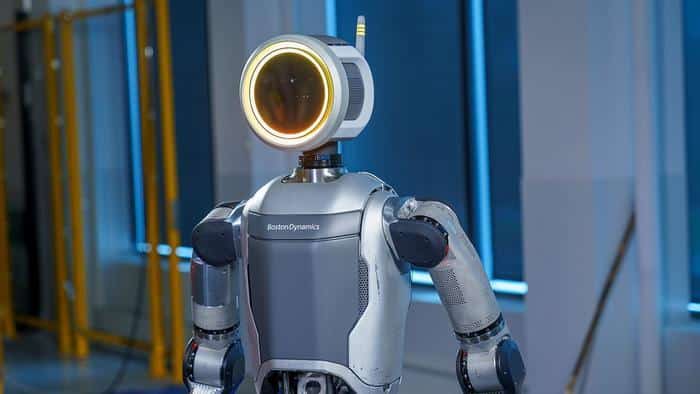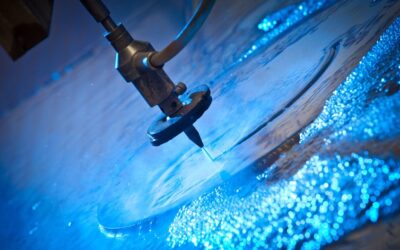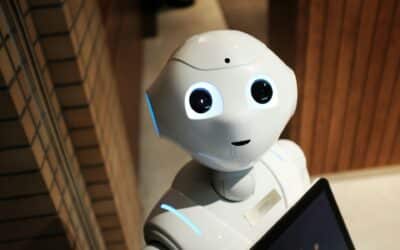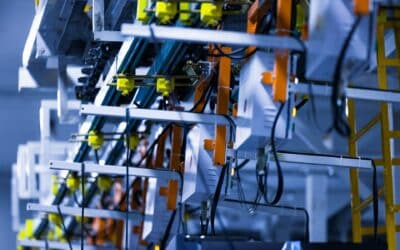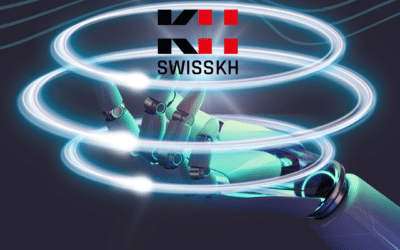The future of robotics is being shaped by increasingly intelligent, adaptive, and human-like machines. Pioneering companies like Boston Dynamics and Tesla are turning science fiction concepts into reality, creating robots capable of understanding, interacting, and even learning. These advancements are revolutionizing sectors such as industry, healthcare, and domestic services, paving the way for robotics to become deeply integrated into our daily lives.
Boston Dynamics: Robotics Inspired by Nature
Boston Dynamics leads in biomimetic robotics, drawing inspiration from human and animal movements to design powerful and versatile robots. Among their most impressive creations:
Atlas: The Agile Humanoid
- Designed for complex and dynamic tasks, Atlas excels in operations in hazardous environments.
- Capabilities:
- Walking on uneven terrain.
- Performing complex movements, including synchronized jumps.
- Applications: Rescue missions, industries requiring precise and rapid movements.
Spot: The Versatile Quadruped
- Specialized in surveillance and inspection missions, Spot can:
- Navigate challenging environments.
- Carry out security and industrial inspection tasks.
- Applications: Industrial sites, security, military uses.
Boston Dynamics also focuses on improving human-machine interaction, making their robots more intuitive to use. In the long run, their robots aim to be integrated into everyday contexts for practical applications.
Tesla: Robotic Revolution with Optimus
At the same time, Tesla brings a new vision to robotics with its Optimus project, a humanoid robot designed to automate repetitive tasks while remaining accessible to a wide audience.
Optimus: Robotics Focused on Optimization
- Powered by AI and computer vision technology from Tesla’s autonomous vehicles.
- Main capabilities:
- Adapting to domestic and industrial environments.
- Performing precise tasks such as material handling or home assistance.
- Unique advantage: A user interface that learns and adapts to human habits.
Optimus aims to democratize humanoid robotics, making these machines affordable and versatile enough to meet a wide range of needs, from industry to household use.
Applications of Humanoid Robotics: Endless Possibilities
Advances by Boston Dynamics and Tesla open up numerous opportunities across various sectors:
Industry and Logistics
- Handling complex objects.
- Managing tasks related to material handling and organization in constrained environments.
Healthcare and Elderly Care
- Robots assisting medical staff with repetitive or precise tasks.
- Supporting elderly individuals in their daily activities.
Domestic Services
- Robots performing tasks such as cleaning or cooking, offering personalized assistance.
These applications show how robots can become reliable partners in our daily lives, reducing human effort and increasing efficiency.
Challenges for Tomorrow’s Robotics
Despite impressive progress, several challenges remain to be addressed:
- Development costs: Making robotics economically viable for widespread adoption.
- Safety: Ensuring robots interact with humans safely.
- Data protection: Preserving the privacy of data collected by these intelligent machines.
These technical and ethical challenges require a responsible approach to ensure the harmonious deployment of humanoid robotics.
Conclusion: A More Human Robotics
The advancements of Boston Dynamics and Tesla are redefining our relationship with machines, ushering in an era where robots are no longer mere tools but partners capable of interacting and collaborating with us. Through the convergence of biomimicry, artificial intelligence, and precision engineering, robotics is becoming a crucial lever for improving our lives and optimizing industrial processes.
Ready to integrate robotics into your business? Discover how SwissKH can support your technological transition with tailored solutions.
